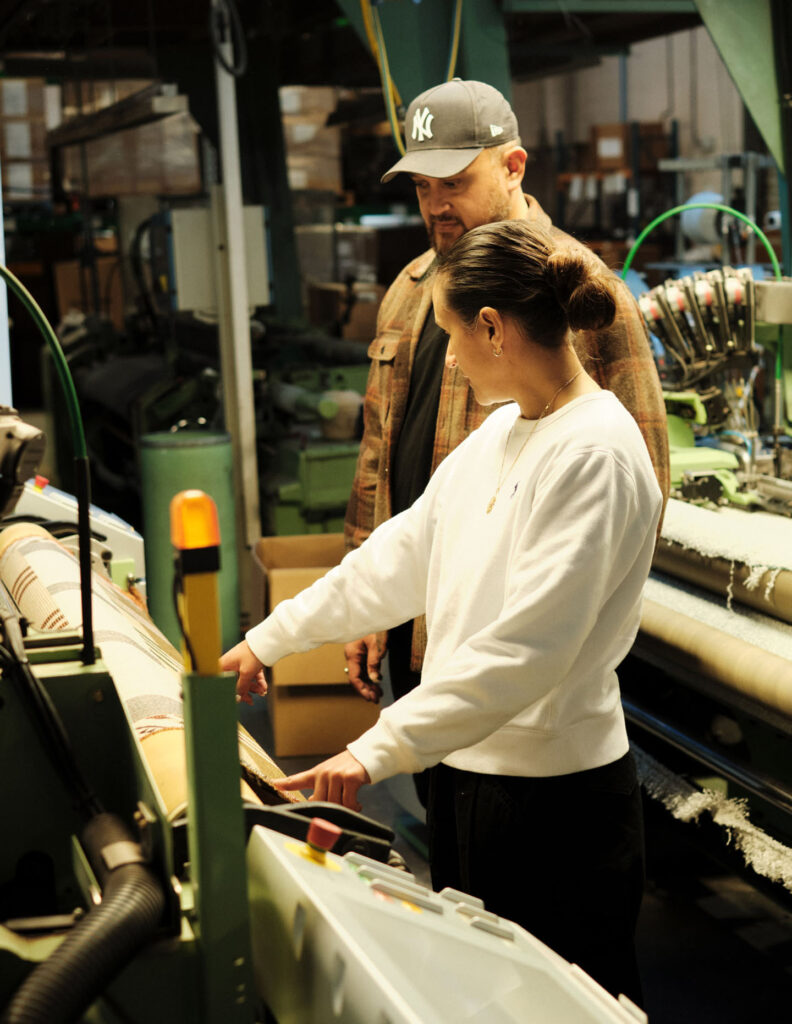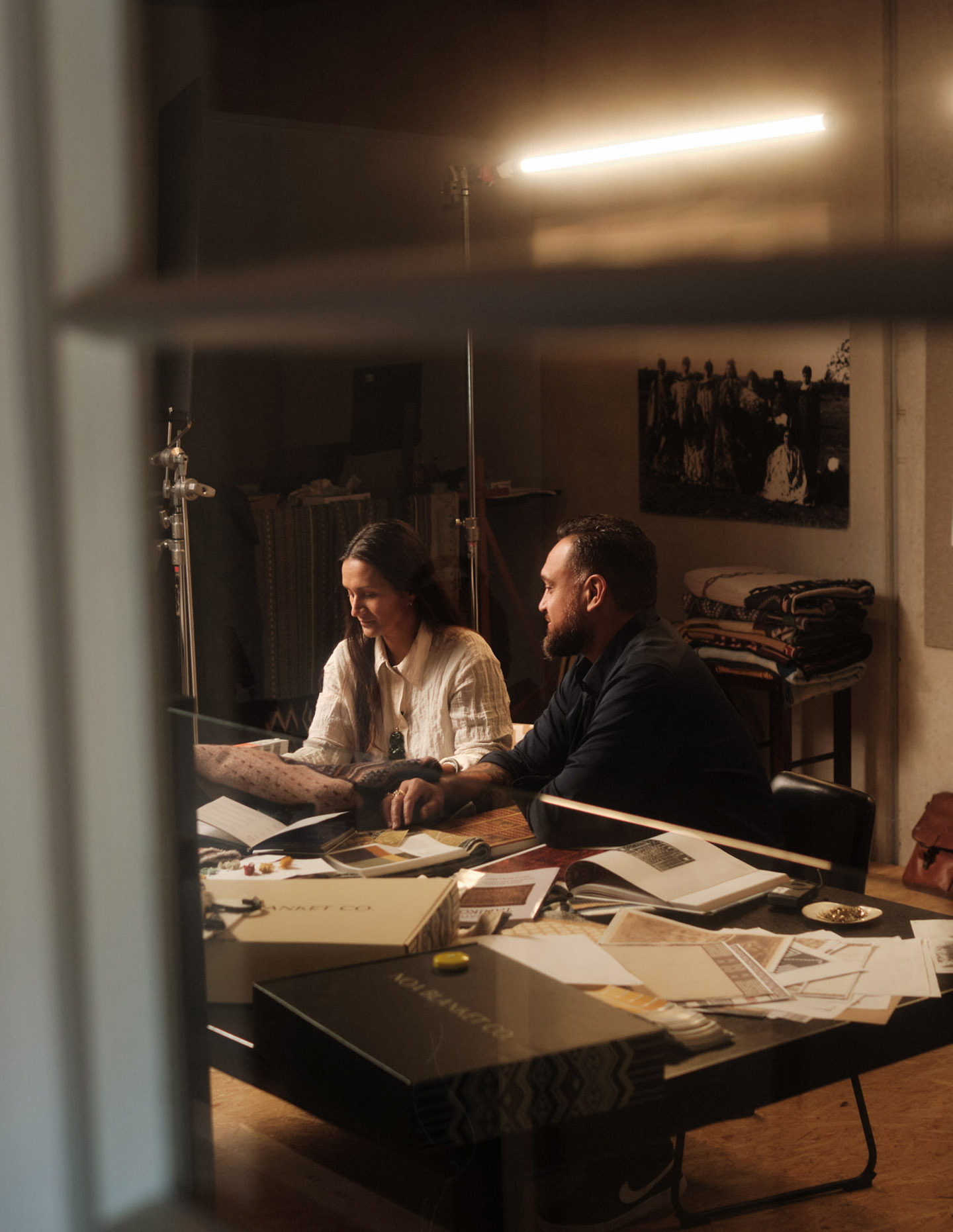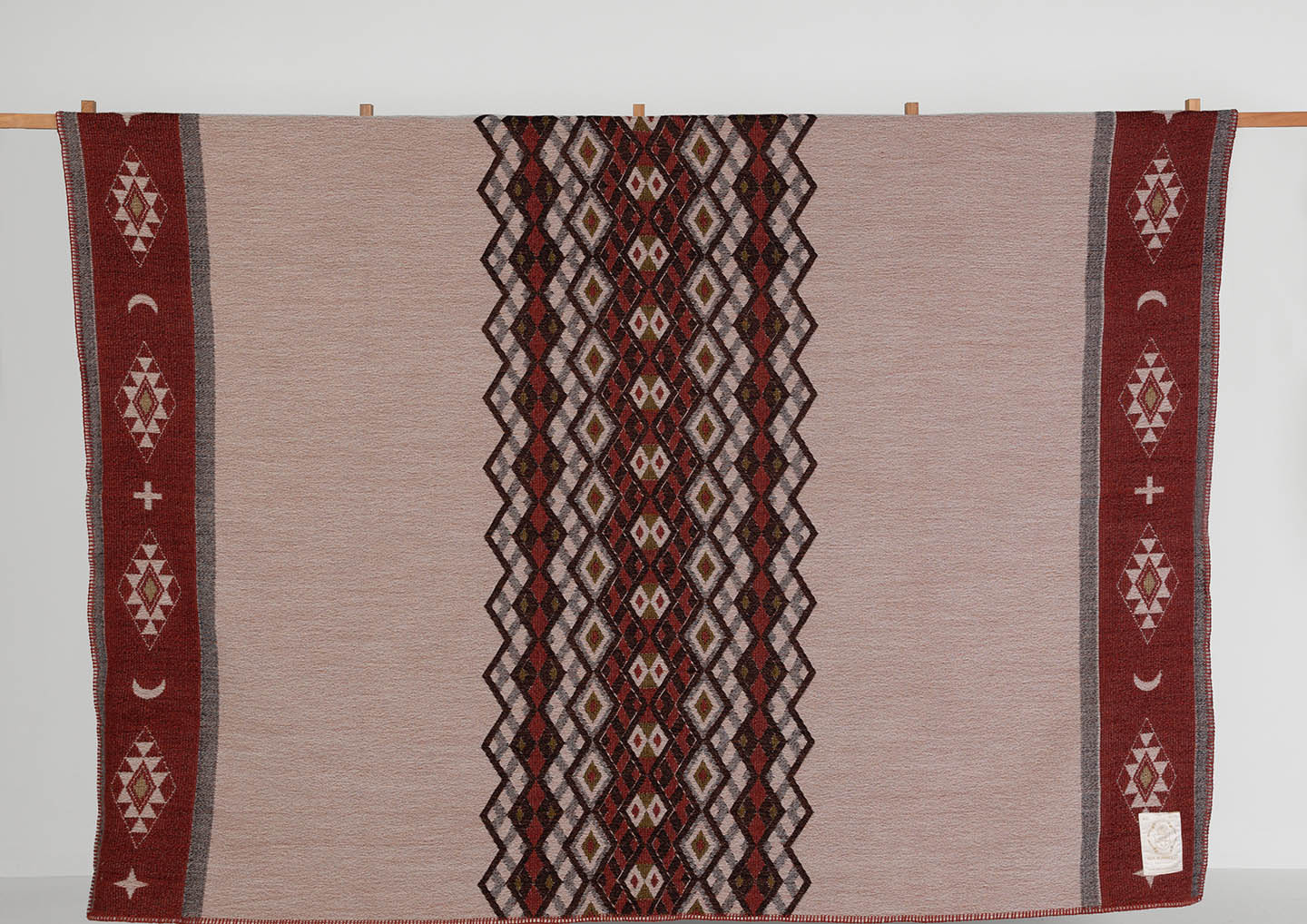Timothy Alouani-Roby: Please tell us a bit about what you do at Noa Blanket Co.
Josh and Whakaawa Te Kani: We’re proud storytellers here at Noa Blanket Co.
We weave luxury wool blankets, made from 100 per cent pure New Zealand wool, that share our stories of identity. Intentionally drawing on Māori design, Noa blankets are crafted as a keepsake, an art form celebrating our cultural uniqueness whilst commemorating our universal human values within our homes and lives.
Consciously made in Aotearoa (New Zealand), our intention is to create a deeper meaning to the ceremony of storytelling and gift giving, weaving our stories – to be shared, gifted and treasured. To remind us every day of who we are and where we come from.
What does the recent Limited Edition Collection involve?
Our new Limited Edition Collection, Te Ata Hāpara (The Dawn of a New Day), features two unique blanket designs woven in a broad blanket style – a heavier yarn producing a thicker weighted blanket. Drawing upon the traditional art of tāniko (finger weaving, embroidery) both full body designs reflect the detail and purposeful intent of the ancient art form to produce an ornate decorative treasure that’s bold in design, colour and texture.
Te Ata Hāpara speaks to the practice of fortifying our faith. In challenging times and hardship, it is an encouragement to continue to hope and believe for a better future.

Can you tell us a little about the history of wool and woollen blankets in Aotearoa-New Zealand?
We have a long history with wool and woollen blankets in New Zealand. From the introduction of wool blankets with the arrival of early traders and settlers in the early 1800s, we saw the integration of wool into Māori society. Wool fibre was woven into our traditional Māori weaving practices and wool blankets became common attire featuring heavily throughout the NZ Land Wars period. 50 years later, wool blankets would warm and comfort our soldiers in WWI and WWII. The New Zealand wool industry boom of the 1950s saw the establishment of numerous wool mills across the country as NZ wool quality became world renowned, our small nation became the world’s third largest wool producer. Sheep farming and shearing became a common occupation and pastime, a hearty lifestyle requiring a determined and tenacious character, which would be tried and tested as we would weather the storms of heartbreaking industry recession.
Our relationship as a nation with wool and the wool blanket is long established, interwoven over generations. The wool blanket is an iconic national heritage item, etched into the memory of many as Nan’s itchy blanket at the homestead… here in Aotearoa (New Zealand), wool is a part of our national identity.
How do you tap into this history?
Tiro whakamuri, anga whakamua – we look back (into our past) to gain vision and move forward into the future.
We proudly carry our wool blanket history into the future. Each touch point across the vast history of the wool blanket in NZ provides an opportunity to pull upon these threads of identity to understand how we’re ‘woven’ together as people. The wool blanket is vested in our nation’s memory, it’s a keepsake, an heirloom that reflects our uniqueness and our commonality. The wool blanket embodies our people and cultures interwoven as weft and warp, it resembles our collective resilience in times of challenge and the warmth of our shared successes. Our intention is to reinvigorate this heritage treasure and embellish it with our cultural design stories, to retell our tales of old, ensuring they endure into the future.

How does Māori culture shape your work?
Our work is centred in Te Ao Māori (the Māori world) which not only influences our bold design style, but inspires and guides our concept development, our networks and relationships and how we articulate our stories. It’s a relational worldview, grounded in our innate connection with both people and the natural environment. Māoridom, like many Indigenous cultures, has retained a vast knowledge base and systems, held in language and art that continue to perpetuate our core human values, empowering our human culture of care.
How important are physical objects, such as textiles, in telling stories of Indigenous resistance and continuity of culture?
Taonga tuku iho – heirloom.
Taonga such as traditional textiles, precious ornate carvings and objects are more than just material possessions; they are a tangible link to a person’s history and heritage. Wool blankets were highly valued by our predecessors, and like the many traditional Māori taonga, they’re durable and lasting. They continue to retell the stories of who we are and where we come from, not just in the design stories we weave into them, but even after the loom. As they are carried, gifted, received and wrapped around us, their stories of identity, resilience, challenge and triumph continue to be woven over many lifetimes.









